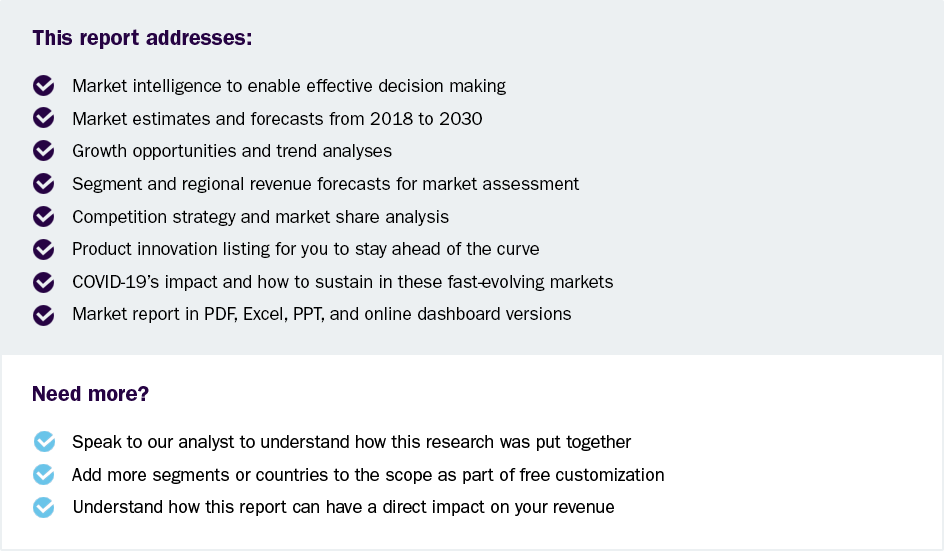Computational Pathology Market To Reach $1.04 Billion By 2030
Computational Pathology Market Growth & Trends
The global computational pathology market size is expected to reach USD 1.04 billion by 2030, registering a CAGR of 8.24% from 2025 to 2030, according to a new report by Grand View Research, Inc. This growth can be attributed to the rising prevalence of chronic diseases, the increasing demand for advanced solutions for faster diagnosis, the rising integration of Machine Learning (ML) and artificial intelligence (AI) technologies and increasing investment in healthcare supported by market players focused on developing advanced solutions.
Integrating artificial intelligence (AI) and machine learning (ML) algorithms into digital pathology workflows is revolutionizing the field, enabling faster and more accurate analysis of pathology images. AI-powered tools can assist pathologists in detecting patterns, predicting disease progression, and giving clinically relevant insights crucial for disease detection. For instance, In September 2024, Paige introduced Paige Alba, a clinical-grade multimodal co-pilot aimed at transforming personalized medicine and precision oncology. Alba provides real-time, AI-driven insights from patient data, enhancing clinical decision-making at unprecedented speed and scale. This innovation represents a major leap toward Artificial General Intelligence (AGI) in healthcare, bringing the industry closer to a future where AI not only supports but collaborates with clinicians in diagnosing and treating complex diseases such as cancer.
Several companies operating in the market also focusing on developing innovative solutions to enhance the application and performance of computational pathology. For instance, in August 2023, Microsoft and Paige researchers developed Virchow2 and Virchow2G, second-generation foundation models for computational pathology. These large language models are trained on vast amounts of pathology data to understand the complex relationships between clinical information, pathology findings, and disease outcomes.
Virchow2 and Virchow2G can generate human-readable text, answer questions, and assist in tasks like report generation and case summarization. The models are designed to be fine-tuned for specific tasks, enabling their use in various computational pathology applications. This advancement represents a significant step forward in leveraging AI to enhance pathologists' decision-making and improve patient care in computational pathology. Similarly, transitioning from traditional microscopy to digital pathology further contributes to the market growth. This shift enhances accessibility and facilitates remote consultations and collaborative efforts among pathologists worldwide.
The COVID-19 pandemic has accelerated this trend as healthcare systems search for alternatives to execute operations while ensuring compliance with safety protocols. Furthermore, regulatory bodies significantly contribute to digital pathology's growth, leading to approvals for various digital imaging systems and software applications. As organizations invest in infrastructure to support digital workflows, the market is expected to witness significant growth driven by enhanced operational efficiencies and improved diagnostic capabilities.
 Request a free sample copy or view report summary: Computational Pathology Market Report
Request a free sample copy or view report summary: Computational Pathology Market Report
Computational Pathology Market Report Highlights
-
Based on component, software segment dominated the market in 2024 owing to the various advantages offered by these solutions that help in enhancing clinical workflows.
-
Based on application, disease diagnosis dominated the application segment with a revenue share of 45.7% in 2024 owing to the rising demand for more effective and accurate diagnosis tools in hospitals and diagnostics centers globally.
-
Based on technology, machine learning dominated the market in 2024 owing to the rising development of computational pathology solutions with integrated ML technologies that offer better performance and outcomes in healthcare facilities.
-
Based on end use, hospitals and diagnostic labs segment held the largest market share of 51.09% in 2024, driven by the increasing demand for advanced diagnostic tools and efficient workflow solutions.
-
North America held the largest market share of 40.5% in 2024. This can be attributed to the regions developed healthcare infrastructure and increasing access to the computational pathology solutions coupled with the rising incidents of the chronic diseases such as cancer.
-
Major players are employing various strategies such as product launches, collaborations, acquisitions, and mergers to expand their service portfolios and enhance their geographical presence, leading to significant competition within the market. For instance, in February 2023, ClaraPath acquired Crosscope to integrate tissue processing robotics with AI-powered digital pathology, aiming to create the "lab of the future." This combination enhances workflow efficiency by automating tissue processing while leveraging AI technologies for advanced image analysis and diagnostics.
Computational Pathology Market Segmentation
For this report, Grand View Research has segmented the global computational pathology market based on component, application, technology, end-use, and region:
Computational Pathology Component Outlook (Revenue, USD Million, 2018 - 2030)
-
Software
-
Services
Computational Pathology Application Outlook (Revenue, USD Million, 2018 - 2030)
-
Disease Diagnosis
-
Drug Discovery & Development
-
Academic Research
Computational Pathology Technology Outlook (Revenue, USD Million, 2018 - 2030)
-
Machine Learning (ML)
-
Deep Learning
-
Others
-
-
Natural Language Processing (NLP) Models
-
Computer Vision
-
Others
Computational Pathology End-use Outlook (Revenue, USD Million, 2018 - 2030)
-
Hospitals and Diagnostic Labs
-
Biotechnology and Pharmaceutical Companies
-
Academic and Research Institutes
-
Other
Computational Pathology Regional Outlook (Revenue, USD Million, 2018 - 2030)
-
North America
-
U.S.
-
Canada
-
Mexico
-
-
Europe
-
UK
-
Germany
-
France
-
Italy
-
Spain
-
Denmark
-
Sweden
-
Norway
-
-
Asia Pacific
-
Japan
-
China
-
India
-
Australia
-
South Korea
-
Thailand
-
-
Latin America
-
Brazil
-
Argentina
-
-
Middle East & Africa
-
South Africa
-
Saudi Arabia
-
UAE
-
Kuwait
-
List of Key Companies in the Computational Pathology Market
-
Leica Biosystems Nussloch GmbH (Danaher)
-
Hamamatsu Photonics, Inc.
-
Koninklijke Philips N.V.
-
Olympus Corporation
-
F. Hoffmann-La Roche Ltd.
-
Mikroscan Technologies, Inc.
-
FUJIFILM Holdings America Corporation
-
Epredia (3DHISTECH Ltd.)
-
Visiopharm A/S
-
Proscia Inc.
-
Tempus
-
Huron Technologies International Inc.
-
ContextVision AB
-
CellaVision
-
aetherAI
-
CellCarta
-
IBEX (IBEX MEDICAL ANALYTICS)
-
Nucleai, Inc.

